
-
Find the right food for your petTake this quiz to see which food may be the best for your furry friend.Find the right food for your petTake this quiz to see which food may be the best for your furry friend.Featured products
 Puppy Food
Puppy FoodHill's Science Plan Puppy Multipack Wet Dog Food with Chicken & Beef are complete premium pet foods for growing puppies from weaning until 1 year old and for pregnant and nursing dogs. Your puppy will love these deliciously smooth and savoury minced loaves, formulated for balanced nutrition and overall health.
Shop Now Mature Adult Dog Food
Mature Adult Dog FoodHill's Science Plan Mature Adult Multipack Wet Dog Food with Chicken & Beef are complete premium pet foods for mature adult dogs from 7 years. Your dog will love these deliciously smooth and savoury minced loaves, formulated to deliver the appropriate amount of energy to support the needs of adult dogs.
Shop Now Adult Wet Dog Food with Beef
Adult Wet Dog Food with BeefHill's Science Plan Adult Multipack Wet Dog Food with Chicken, Beef & Turkey are complete premium pet foods for adult dogs from 1 year. Your dog will love these deliciously smooth and savoury minced loaves, formulated for balanced nutrition and overall health.
Shop NowFeatured products Adult Multipack Wet Cat Food with Beef, Ocean Fish & Chicken
Adult Multipack Wet Cat Food with Beef, Ocean Fish & ChickenTender chunks in gravy for cats, with high-quality protein to maintain lean muscle. With vitamin E and omega-3s & -6s for healthy skin and balanced minerals to support healthy vital organs.
Shop Now Light Adult Multipack Wet Cat Food with Chicken & Ocean Fish
Light Adult Multipack Wet Cat Food with Chicken & Ocean FishTender chicken chunks in gravy for cats, with L-carnitine and fewer calories for ideal weight management. Packed with high-quality protein, omega-6s, and vitamin E for shiny fur and healthy skin.
Shop Now Mature Adult Wet Cat Food with Chicken
Mature Adult Wet Cat Food with Chicken
Tender chicken chunks in gravy for mature adult cats. Made with easy-to-digest ingredients, high-quality protein for lean muscle maintenance and antioxidant vitamins C+E for optimal health.
Shop Now -
Dog
- Dog Tips & Articles
-
Health Category
- Weight
- Food & Environmental Sensitivities
- Urinary
- Digestive
- Joint
- Kidney
-
Life Stage
- Puppy Nutrition
- Adult Nutrition
- Senior Nutrition
Cat- Cat Tips & Articles
-
Health Category
- Weight
- Skin & Food Sensitivities
- Urinary
- Digestive
- Kidney
-
Life Stage
- Kitten Nutrition
- Adult Nutrition
Featured articles The Right Diet For Your Pet
The Right Diet For Your PetIn people, the right diet is very important. If you are eating the wrong way for your metabolism, activity level, age and lifestyle you could end up with health issues.
Read More Show some love with wet foods: a great choice for pets with health issues
Show some love with wet foods: a great choice for pets with health issuesShow some love with wet foods: a great choice for pets with health issues.
Read More The Incredible Science Behind Your Pet's Microbiome
The Incredible Science Behind Your Pet's MicrobiomeLearn what your pet's microbiome is, how it contributes to your pet's gut and overall health, and why nutrition is important in maintaining healthy microbiomes.
Read More -


High-protein dog food sounds like a good thing. After all, dogs are primarily meat eaters ... aren't they? This claim is often made, but if you know dogs, you know that if left to their own devices they'll go for whatever edible thing is easiest to get to, be it meat, vegetables, crisps, or the contents of your cat's litter box. Observing your dog's unsupervised eating habits isn't necessarily the best way to tell what's good for them. Read on to learn how much and what kind of protein for dogs is best.
Carnivores vs. Omnivores
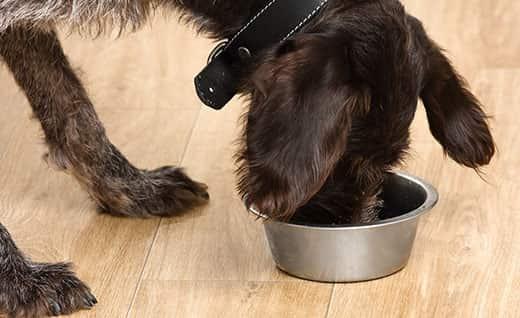
It's often thought that dogs are exclusive meat eaters that require high-protein dog food. This belief stems partly from the fact that dogs are related to wolves, which are indeed carnivores, and from the fact that dogs belong to the scientific order Carnivora, which includes wolves and other meat-eating species. Despite its name, this order also includes herbivores and omnivores, such as bears and raccoons, says the Encyclopaedia Britannica. The truth is that dogs have evolved a number of differences from wolves over the millennia. One of those differences, according to a study published in Nature, is that the genome of dogs has evolved to not only enable them to digest plant-based starches, but to thrive on foods that include a wide variety of ingredients including fruits, vegetables, herbs, grains, meats, poultry, fish and more, making them true omnivores.
How Much Protein Does Your Dog Need?
Dogs aren't carnivores, but they do need essential amino acids found in protein in order to thrive. However, some veterinarians still caution against feeding high amounts of protein to dogs with kidney disease, as well as to senior dogs. When in doubt, it's always best to check with your vet to ensure your dog is getting proper nutrition. So, rather than looking for the quantity of protein in your dog's food, you should be looking at the quality.
Dogs can only use a certain amount of the protein that is digested and absorbed at once to repair and maintain muscles and other tissues. Any excess must be disposed of, which means it is broken down and burned for energy or stored as fat. Either way, the kidneys remove the byproducts of protein breakdown and excrete them in the urine. If you've ever noticed those yellow spots on your lawn from your dog doing their business, there is a good chance that they’re caused by excessive protein in the system. Also, if your dog is putting on weight, it might be worth examining the protein content of their food.
Another danger is feeding too little protein to your dog. Dogs need protein to provide energy and build strong muscles, bones, and joints. As a general guideline, the Pet Food Manufacturers’ Association recommends that adult dog food contain a minimum of 18g of protein per 100g of dry matter (meaning what's left after all of the moisture is extracted from dog food). For growing puppies and nursing mothers, the recommendation is at least 20g per 100g of dry matter. Again, you should ask your vet how much protein is recommended for your dog's life stage and activity level.


Tasty Tips
High-Protein Dog Food
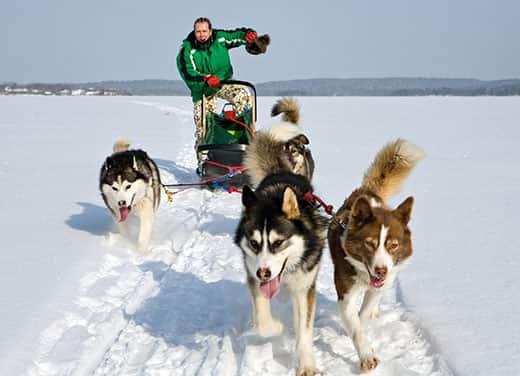
Dog foods marketed as high in animal protein tend to take advantage of the common perception of dogs as domesticated wolves. Dogs are not wolves. They not only have the means to digest plant matter, but their digestive systems are equipped to access the amino acids in plant-based proteins. According to Petfood Industry, it's not the amount of protein in a dog's diet that is important, but the digestibility and bioavailability of amino acids. Often, high-protein, meat-based dog foods include protein sources that are neither highly digestible nor bioavailable to your dog. Unused protein ferments and goes into faecal matter, making your dog's solid waste stinkier, says Petfood Industry.
High-Quality Protein for Dogs
When it comes to digestibility and bioavailability, it's actually a mix of animal-based and plant-based proteins that provide dogs with the highest amount of essential amino acids, says Petfood Industry. Beef, lamb, and poultry don't provide the optimal ratio of bioavailable amino acids by themselves. That's why higher-quality commercial dog foods typically include additional protein sources, such as fish and fish meal, eggs, animal byproducts, and plant-based proteins, such as wheat or corn gluten. Such a wide variety of protein sources ensures that their bodies will actually use the essential amino acids and receive better overall nutrition.
High-Protein Dog Food and Food Allergies
Grains and gluten often get a bad rap for causing allergies and skin problems in dogs. The truth, according to the Kennel Club, is that food allergies in dogs are relatively rare occurrences, making up only 10% of allergies in dogs. What's more, when they do happen, the culprit is usually meat. The Kennel Club lists proteins found in chicken and beef as two of the most common causes of dog food allergies. So while high-protein, grain-free dog foods are sometimes touted as a remedy for allergies, they can actually make things worse if you don't know exactly what your dog is allergic to.
Complete and Balanced Nutrition
Of course, protein is only one component of a pet food that provides complete nutrition for your dog. While some proponents of high-protein foods claim that all your dog needs to eat is meat, the healthiest dog foods balance digestible, bioavailable protein sources with healthy sources of fibre such as grains, fruits and vegetables, healthy fats, and vitamins and minerals. Among other things, these additional components provide energy, aid digestion, strengthen and protect joints, make it easier to absorb vitamins and minerals, and contribute to healthy skin, hair, and teeth. While protein is an essential part of your dog's diet, protein alone can't provide everything that's needed for your dog's overall health.
When shopping for food for your dog, it's important to look beyond the marketing claims on the package. Instead, be sure to check the list of ingredients and nutritional makeup of the food. High quality protein sources should be high on the list, but so should quality sources of grains or vegetables and fats. Vitamins and minerals should round out the list. This will help ensure that you're feeding your dog high-quality dog food that provides not just one component, but all of the nutrition they need to live a long and healthy life.
Reviewed by Mark Brady, DVM, DACVECC


One of our staff authors prepared this article for you
Related products
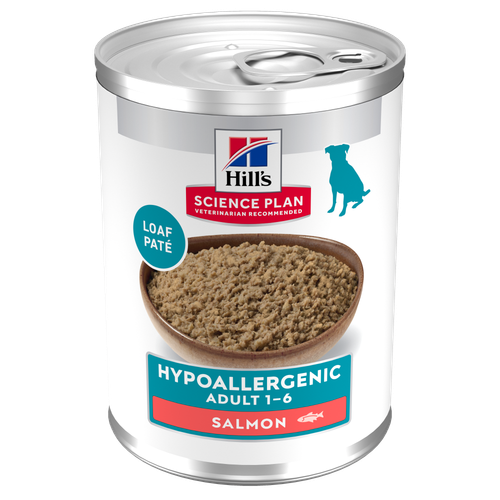
Hill's Science Plan Hypoallergenic Adult Wet Dog Food with Salmon is a complete premium pet food for all adult dogs from 1 year. This savoury tinned loaf is specially formulated for dogs with delicate skin and stomachs. It features a single novel animal protein source and is grain-free.

Hill's Science Plan Adult Multipack Wet Dog Food with Chicken, Beef & Turkey are complete premium pet foods for adult dogs from 1 year. Your dog will love these deliciously smooth and savoury minced loaves, formulated for balanced nutrition and overall health.

Hill's Science Plan Mature Adult Multipack Wet Dog Food with Chicken & Beef are complete premium pet foods for mature adult dogs from 7 years. Your dog will love these deliciously smooth and savoury minced loaves, formulated to deliver the appropriate amount of energy to support the needs of adult dogs.

Hill's Science Plan Puppy Multipack Wet Dog Food with Chicken & Beef are complete premium pet foods for growing puppies from weaning until 1 year old and for pregnant and nursing dogs. Your puppy will love these deliciously smooth and savoury minced loaves, formulated for balanced nutrition and overall health.
Related articles
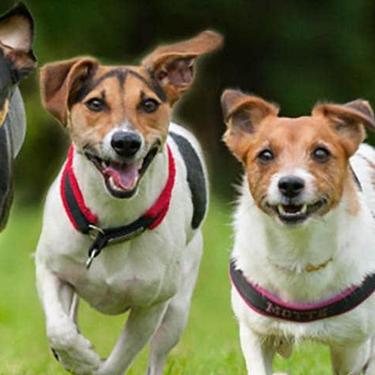
Learn effective tips for feeding a dog that's a picky eater and ensure proper nutrition for a finicky eater. Discover tips for pet parents at Hill's Pet UK.
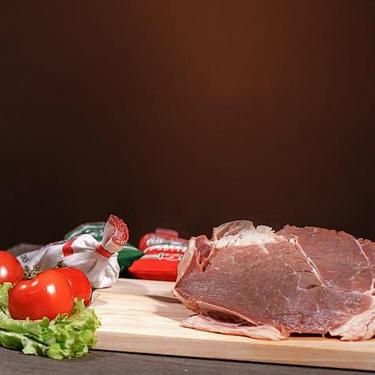
Learn about the potential health risks of a raw diet for dogs and why they aren't the best option for your pup or you.

Many human foods are dangerous to dogs. Read about 5 of the worst toxic food offenders that can kill your dog - and how much it takes to hurt them.
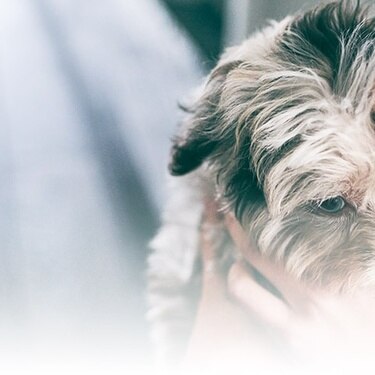
How, when and what to feed your new puppy is an important decision, learn more about the things to consider for feeding your puppy.

Put your dog on a diet without them knowing
Our low calorie formula helps you control your dog's weight. It's packed with high-quality protein for building lean muscles, and made with purposeful ingredients for a flavourful, nutritious meal. Clinically proven antioxidants, Vitamin C+E, help promote a healthy immune system.
Put your dog on a diet without them knowing
Our low calorie formula helps you control your dog's weight. It's packed with high-quality protein for building lean muscles, and made with purposeful ingredients for a flavourful, nutritious meal. Clinically proven antioxidants, Vitamin C+E, help promote a healthy immune system.

